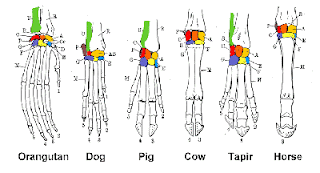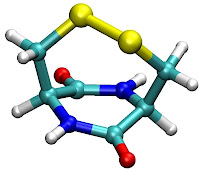Human Body Systems!
Integumentary System: Your body is very prone to damage, and that's why we have this system! This is an organ system that helps protect the body. It has many functions such as to cushion, excrete wastes, regulate temperatures and is the site for sensory receptors to detect pain and sensation. This is the largest of the body's organ systems and it can include of skin, hair, and nails.
Muscular System: Ever wonder how your able to move so freely? This is the system to thank! It is an organ system made up of skeletal, smooth and cardiac muscles. Not only does it move your body, it also helps to keep posture and circulate blood throughout the body. Some muscles in this system include your heart or cardiac muscle and there are muscles in every area of your body; legs, arms, chest, etc. Your nervous system controls the movement in each muscle you move.
Skeletal System: This is made up of all the bones, tendons, ligaments, and cartilage in the body. The skeletons main job is to provide support for your body, without it your body would collapse. It also helps protect all of your internal organs and body tissues; the skull protects your brain and eyes, the ribs protect your heart and lungs, and the vertebrae protects your spinal cord.
Circulatory System: An organ system that passes nutrients (amino acids, gases, hormones, blood cells, etc.) to and from cells in the body using the heart, arteries, and veins. This system is needed to help fight diseases, stabilize pH and body temperature, and maintain homeostasis.
Digestive System: We all love food, but how does our body break it down? This system uses a digestive tract, hollow organs joined in a long tube from the mouth to the anus, to break down and absorb it. It enters through the mouth and down the esophagus, then to the stomach where tiny glands help digest the food. It then goes through the small intestine to the large intestine (colon), where it then exits the body through the anus. Along the way your muscular system contracts and helps it move through. The pancreas and liver are two more very important organs that work together with the nervous system to help break down food in your body.
 Nervous System:
Nervous System: A network of neurons (cells) that coordinate actions by sending signals throughout the body. There are two parts of this system, the central which contains the brain, spinal cord and retna; and the peripheral which is made of ganglia and nerves. The peripheral is sensory, it connects to the central nervous system telling it what the body feels; pain, temperature, etc.
Endocrine System: This system contains glands that create different types of hormones (chemicals) that are sent into the blood. These hormones are what regulates the body. They spread through the blood stream using tiny glands throughout the body. Metabolism, growth and development, and mood are some of the things that hormones control.
Reproductive System: Without this system there would be no reproduction. It is made up of organs that work together, including the external genitalia and the gamete producing gonads. Both male and female reproductive systems are not the same. A females reproductive system is used to produce egg cells and to protect the offspring until birth. The female reproductive system relies on hormones created by the endocrine system. The males system is used to produce and deposit sperm. This meaning it requires both a female and male reproductive system to create an offspring.
Respiratory System: This is the system that allows you to breath. It uses airways(nose,mouth), lungs and the muscular system to take in respiratory gases in your body and perform a gas exchange. Oxygen is exchanged to carbon dioxide by diffusion with external gases and the blood. This action removes the carbon dioxide and other toxins from your blood circulation, acting as a cleanser.
Excretory (urinary) System: It is a biological system that removes excess and unnecessary materials from the body. It gets rid of wastes of the metabolism, gases and liquids (urine,sweat). The bladder, skin, lungs and kidneys are all major organs in the excretory system. It works along with the respiratory and circulatory systems by getting rid of gaseous waste from the lungs, and waste from the bloodstream through urination. Without this you could not maintain homeostasis in your body and the excess materials would cause much damage.
Immune/Lymphatic System: It is a variety of structures and processes that protects the body against diseases, viruses, toxins and parasites. This system is made up of special cells, tissues, proteins, and organs that are able to protect the body from anything not suppose to be in it. It monitors the body by using white blood cells called leukocytes. There are two types of leukocytes; phagocytes which chew up invading organisms and, lymphocytes which allow the body to recognize intruders and help it destroy them. This system helps keep you alive every day.
*underlined systems are systems that interact with system being discussed



























.jpg)





















